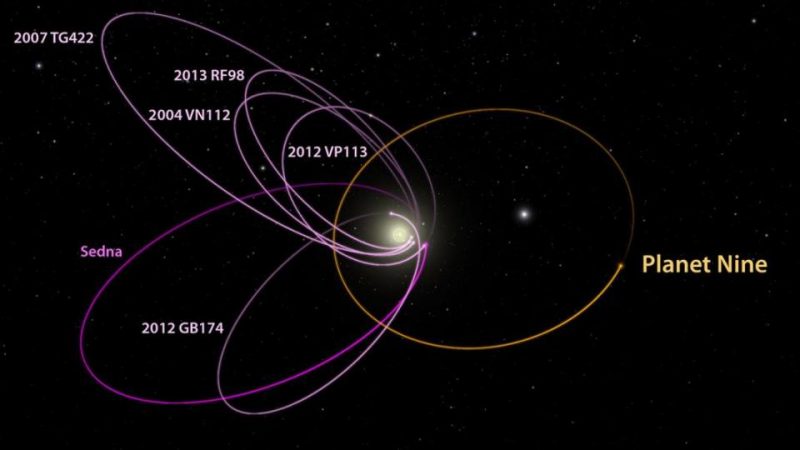
Just over a year ago, astronomers at Caltech announced solid theoretical evidence for a giant planet – a 9th major planet in the outer solar system – moving far from our Earth and sun, on the solar system’s outer fringes. They nicknamed it Planet 9 and said they hoped other astronomers would search for it. Now Arizona State University astronomer Adam Schneider and his colleagues are asking for your help in the search. To get you started, they suggest you visit their new citizen-science website called Backyard Worlds: Planet 9.
Before we go on, let me say this, because we’ve already had questions today. The hypoethetical Planet 9 being discussed by astronomers has nothing to do with the doomsday conspiracy theory Nibiru. There’s no evidence in astronomy for a Nibiru. The Planet 9 being discussed by astronomers is big, with a mass about 10 times that of Earth (a mass similar to the 8th planet, Neptune). But, if it exists, it orbits in orbits about 20 times farther from the sun on average than Neptune, and a thousand times farther from the sun than Earth. So this Planet 9 is not Nibiru.
The evidence for a Planet 9 comes from studying the orbits of objects in our solar system’s Kuiper Belt, a zone of comet-like bodies orbiting the sun out beyond the orbit of Neptune. Astronomers believe they can see the unknown planet’s effects on the Kuiper Belt objects.
But, as yet, no one has yet observed Planet 9 directly.
And that’s where you come in.

You can contribute using the Backyard Worlds: Planet 9 website, which is produced in association with the great citizen science site Zooniverse.org. The website uses images taken by NASA’s WISE space telescope, which was launched in late 2009 and has mapped the entire sky several times during the past seven years. WISE detects infrared light, the kind of light emitted by objects at room temperature … the kind of light unknown planets might emit.
But there’s a snag: Images from WISE have captured nearly 750 million individual sources in the sky. Planet 9 may be among them.
The trick to finding it is to look for something in motion. Because it lies in our own solar system – albeit distant from our sun – Planet 9 would appear to move apart from the star background.
So that’s why astronomers need your help. They need many, many people to help them systematically scan infrared images of the sky, searching for objects that move.
The search method is a 21st-century version of the same technique used at Arizona’s Lowell Observatory by astronomer Clyde Tombaugh. He discovered dwarf planet Pluto 87 years ago this month, on February 18, 1930. Back then, Tombaugh compared two photographs taken a couple weeks apart, looking for a tiny dot of light that shifted position.
The Backyard Worlds search works similarly, but by electronically serving up flipbooks of WISE images taken at different times. As each flipbook plays, objects in the field move or change appearance, making it easy for volunteer observers to flag suspicious objects for later follow-up.
Participants will share credit for their discoveries in any scientific publications that results from the project.
In addition to searching for a distant planet orbiting the sun, this new project will help astronomers identify the sun’s nearest neighbors outside of our solar system. Those neighbors aren’t star; that is, they don’t burn thermonuclear fuel in their interiors and thus shine as stars do. Instead, they are star-planet hybrids known as brown dwarfs. Lead researcher for Backyard Worlds: Planet 9, Marc Kuchner, an astrophysicist at NASA’s Goddard Space Flight Center, commented in a statement:
There are just over four light-years between Neptune and Proxima Centauri, the nearest star, and much of this vast territory is unexplored.
Astronomers expect the sun’s neighborhood will contain many of these low-mass brown dwarfs. These emit very little light at visible wavelengths, but instead glow dimly with infrared — heat — radiation. Schneider said:
Brown dwarfs are somewhat mysterious. They have masses of less than 80 times that of Jupiter, because that’s the point at which nuclear fusion begins and an object becomes by definition a star.

Bottom line: Astronomers want your help in scanning for brown dwarfs and a possible 9th planet in our solar system. To get started, visit Backyard Worlds: Planet 9.











